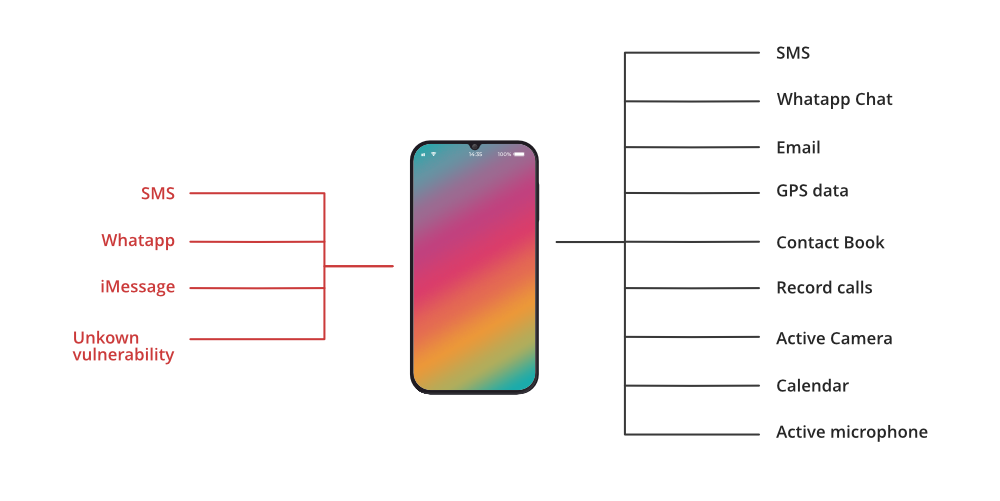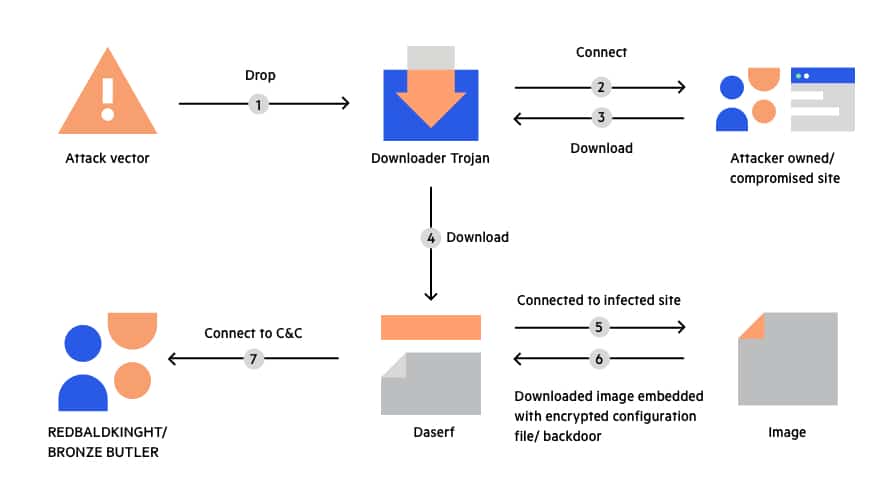As with other emerging nations in Southeast Asia and beyond, the Philippines is still confronted with the difficult task of properly tackling the issues of illicit digital operations and cybercrime vulnerability. It is anticipated that its use will rise as technology advances and spreads throughout the nation’s businesses and sectors. The development of new malware attacks in the Philippines will also affect users and businesses. This is partly because there aren’t enough preventative measures in place and sometimes because people don’t realize the risks associated with misusing it.

What is a Malware Attack in the Philippines?
Any kind of malicious program intended to harm or destroy a device, website, user, networked computer, as well as equipment without the intended user’s awareness is referred to as malware.
Malware is created, deployed, and sold by cybercriminals for a variety of purposes, but the most common one is information theft, be it financial, business, or personal. Cybercriminals have different reasons for doing what they do, but they almost always use tactics, methods, and procedures (TTPs) to get sensitive information and accounts in order to accomplish their goals.
Top 8 Malware Attacks in the Philippines
Malvertising
The practice of spreading malware to end-user computers by means of phony advertisements.

Spyware
This is where the program eavesdrops on unwary users, gathering passwords, browser history, and other personal information.

Ransomware
This type of malware encrypts files, infects computers, and withholds the decryption key until the victim makes a payment. Rising ransomware assaults that target businesses and government agencies cost victims millions of dollars, with some having to pay the attackers to get their critical systems back up and running.

Adware
This is software that shows users intrusive and aggressive advertisements, such as pop-up windows.

Hybrid Malware
A lot of today’s malware is a “hybrid,” or a mix of different dangerous software kinds. For instance, “bots” initially manifest as Trojans and subsequently become worms when they are executed. They are often employed to target specific users as a component of a cyberattack that affects the entire network.

Trojan
Trojan malware is one of the hardest kinds to identify since it poses as a trustworthy application. Once the victim executes the harmful code and instructions, this kind of malware can function covertly. It is frequently used to allow additional malware to infect the computer’s operating system.

Virus
A computer virus can spread by altering other programs and introducing its dangerous code when it is run. It is one of the hardest malware kinds to get rid of and the only one that has the ability to “infect” other files.

Worm
By traveling from one system to another, worms can swiftly infect whole networks and have the ability to replicate themselves without the assistance of end users.

Status of Malware Attacks in the Philippines
About 15.37 thousand mobile malware attacks were found in the Philippines in 2022, which is a considerable decrease from the year before. Since 2019, there has been a decrease in the number of mobile device malware attacks in the Philippines. In all of Southeast Asia, Trojan horses are the most prevalent mobile threat, as cited by Statista.
How to safeguard your business against malware attacks in the Philippines?
In today’s linked world, a thorough cybersecurity plan is necessary. The obvious advantage of protecting an organization’s digital assets from a commercial standpoint is that there is a decreased chance of data loss, theft, or destruction, as well as the possibility of having to pay a ransom to restore access to company assets or data. The group also lessens the effect of cyberattacks on corporate operations by preventing or swiftly resolving such incidents.
Local News about Malware Attacks in the Philippines
The Philippines saw a 57.4% increase in ransomware occurrences in 2022, according to cybersecurity firm Palo Alto Networks. Ransomware is malicious software that prevents access to a computer system and demands payment in order to unlock it. Most of these cyberattacks were directed at state and local governments and those working in the manufacturing, professional, and law enforcement industries.
Twelve percent of all malware cases in Southeast Asia in 2022 occurred in the Philippines, making it the fourth most frequently attacked country by malware criminal syndicates.

How do Malware Attacks in the Philippines affect businesses?
The Philippines’ geographic location, combined with its current socioeconomic climate, which is aimed at bolstering political equilibrium and national security, provides an ideal environment for various forms of criminal cyber activity to thrive.
A culture of cybercrime is encouraged by the anonymity of the Internet, the legal and geographical challenges associated with technology-facilitated crimes, the abundance of potential victims and recruits, and the allure of quick money.
These factors may eventually develop into more severely structured criminal activity. Because of the potential impact on the nation’s political and economic stability, the threat posed by transnational organized crime groups operating there is cause for grave concern.
What solutions are being implemented to address Malware Attacks in the Philippines?
The PNP is sending a clear message to criminals that it takes the fight against cybercrime in the nation extremely seriously by forming an Anti-Cybercrime Group. According to the PNP-ACG’s conceptualization and belief, there needs to be a synergy between the following elements in order to combat cybercrime and fortify cyber security: Public and Private Partnerships, Strong International Cooperation, Advocacy, and Public Awareness and the implementation of robust Laws, Policies, and Standards.
Does the country have special services against Malware Attacks in the Philippines?
At present, the PNP has six (6) fully operational Digital Forensic Laboratories across the country, situated in General Santos City, Camp Crame, Legazpi City, Cebu City, Davao City, and Zamboanga City. These PNP offices can answer inquiries on the occurrence of acts of cybercrime within their respective region of responsibility and are equipped to perform computer, mobile, audio, and video forensic investigations. In the future, the PNP hopes to have cyber-forensic labs in each of its regional offices.
TRIVIA: Infamous “ILOVEYOU worm (2000)”
Onel de Guzman, a 24-year-old Filipino resident in 2000, created his product with clear-cut criminal intent: unable to pay for dialup access, he created a worm that would harvest passwords from other individuals in order to profit from their accounts. But the malware propagated like a blaze, acquiring usernames and passwords back to a Filipino email account and spreading copies of the worm onto millions of infected computers.
It did this by cleverly taking advantage of several flaws in Windows 95, most notably the fact that Windows automatically concealed the file extensions of email attachments, making it difficult for users to discover they were unveiling executable programs.

Like in various regions of the world, cybercrime will continue to exist in this nation. The existing state of affairs in the Philippines encourages international cybercrime organizations to persistently conduct business there.
Government institutions will continue to be the target of espionage activities such as data exfiltration, sabotage or disruption, and politically motivated attacks. Mitigating and effectively addressing cybercrime victimization will require an efficient national strategy, legal framework, awareness program, expertise and capacity development programs, and both national and international collaboration.
As the top law enforcement agency in the nation, the PNP is unwavering in its resolve to combat these issues and has made great strides in preventing cybercriminals, particularly transnational organized crime groups, from using the nation as a haven for their illegal activities.









